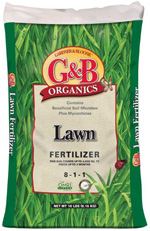|


 Black Forest Organic Soil Conditioner is a premium soil conditioner for roses, vegetables and lawns. Fortified with iron and nitrogen - but will not deplete soil of pre-existing nitrogen like untreated products. Loosens hard, compacted soils to improve drainage and increase moisture retention. Use as an amendment to improve soil or as a mulch to help keep the soil cool and moist.   
  |
 |
FEATURED QUOTE : "To forget how to dig the earth and to tend the soil is to forget ourselves." |

Deciduous Fruit Trees are Here! |
 |
 |
 |
|
To some of us, the pansy/viola is a happy, smiling face reminding us of a gardener friend from long ago. The first sign of that special flower brings a smile to our face and warmth to our heart. After all, this flower is known as the "pixie" of the plant world. How perfect is that to have in your fall/spring gardens! Botanically speaking, members of the genus Viola, which includes the pansy, viola and violets, are perennials. We just happen to treat them as annuals. The varieties that we grow are happiest in cool weather. Planting them now ensures wonderful color in your gardens. There are many different cultivars of pansies and violas offering a wide range of colors and flower sizes: colors from white, yellow, apricot, violet, blue-purples, dusty rose and combinations of all of these colors! The flower sizes range from 1-4 inches. Pansies are best in sun to light shade. If you plant them in deep shade, they will grow, but not reward you with as many flowers. Plant them toward the front of your flower beds, along with your shrubs and other flowering bedding plants. You may not want to put them too close to the edge if your planter is next to your grass--scary weed whackers may chop off their heads! These plants love to trail and would also be beautiful in raised beds, planters and window boxes. Here are a few planting and care tips: Amend the soil before planting to provide good drainage around the roots. Use a good potting soil--not garden soil--if you have them in planters. Space them about 6" apart. Water deeply, but be careful to not overwater. Don't leave them in soggy soil. Mulching around the pansies with 2 inches of organic material will help conserve moisture, and reduce weed growth. Pansies are mostly free of diseases and pests, but if you've had a problem in an area of your garden with pansies, switch and grow them in another area for a year or so. And here is your number one rule: start your morning with a stroll into your garden to start your day with smiling faces. Oh sure, you can take your cup of coffee or tea along with you, too. |
 |
|
Dieffenbachia, also known as dumb cane, is a fairly hearty houseplant that has beautiful foliage.Dieffenbachia will grow well with a variety of lighting conditions, and can take some serious neglect and keep coming back. Dieffenbachia is somewhat temperamental when it comes to watering. It likes a good soak, followed by a dry period. If it stays too wet, you will see yellowing of the leaves, browning along the edges, or rotting of the canes. Yellowing and browning can generally be fixed by letting the plant properly dry out before watering again, but rot is irreversible. Conversely, if the plant goes too long without water or if the room it is in is too dry, it can be susceptible to mites and the leaves may dry up. Dieffenbachia tends to look best in a smaller bushy form. Keeping it in a small-ish pot will keep it this way, around 2' tall. Repotting should be done infrequently, as a larger pot will allow it to grow MUCH larger, up to 10-12' tall. Use a good potting soil in your pot, not garden soil. Dieffenbachia can bounce back from most forgetfulness, but if your neglect goes a little too far, it has a "nuclear option." You can cut the plant down to just canes, and it will generally grow back just like it was before. Try to learn from your previous mistakes, monitoring moisture before you water to ensure proper hydration and prevent rot. While trimming the plant back, save some of the canes for replanting. Propagation can be acheived by slicing off sections of the cane (about 2-3" long) and planting them about half-way into the soil. Keep the soil moist and you will see leaves growing in a matter of a couple weeks. Take into consideration that dieffenbachia is poisonous to ingest. Even getting sap on the skin can cause burning and reddening of the skin. Keep out of reach of pets and children. |
 |
|
Eating great-tasting fresh greens out of the garden is one of the special pleasures one gets from growing one's own vegetables. But you don't need an acre plot of land to do it in--even a small area will work just fine. With just a little planning and ingenuity, you can grow salad greens just about anywhere. All you need is a large planter box, or several smaller ones, if you plan on moving plants in and out. Put in some of our great potting soil and you're in business. If you don't like to bend over, add legs to the sides of the box, or place it on a table--and you can have a raised planter at just the right height. You can grow from seed or transplant seedlings, whichever you prefer. Salad greens perform their very best during the cooler seasons. You can even make your planter look colorful by combining different varieties of lettuce, spinach and field greens in the same box. Make sure to feed your greens some organic plant food on a monthly basis to help bring out the best flavor. |
 |
|
Broccoli is a fantastic crop to grow while the weather is cool. Broccoli likes to be in full sun, as well as rich, PH-neutral, well-drained soil. A heavy feeder, broccoli benefits from high-nitrogen fertilizer, as well as amendments like compost, alfalfa meal, or composted chicken manure. Broccoli grows fairly large, so giving it some room to grow is important. Place seeds or starts about 18" apart and rows between two and three feet apart, to give you some room to walk. You can do two or three rows close together between walkways if you like to maximize spacing, but any more than that will make them hard to reach. Pests can be wide ranging, from cabbage looper caterpillars and cabbage-worms in cooler weather to grasshoppers and harlequin bugs when the weather has warmed up. The best way to manage these is to take a walk through your garden daily and look for damage. If you find any, look under the leaves and pull off and remove any pests. If you have chickens, they'll appreciate the snack, or the bugs can easily be squished. BT can also be used to eliminate caterpillar populations, but will need to be sprayed weekly to be effective. Harvesting your broccoli is easy. Cutting the stem five to six inches below the head will send the signal to the plant to continue growing new heads. Don't wait too long, or your broccoli will bolt, and the florets will spread out and become bitter. Note: if it does bolt, the yellow flowers are edible and great in salads. The leaves are also edible; young, tender leaves can be eaten raw in salads, and the older leaves cooked like spinach or kale. And you can always harvest your broccoli, cut it up, and freeze it to be used later. |

|
Is it a bug or is it a fungus? Telling the difference between insects and fungus or disease problems is not a simple task! Remember when giant whitefly first showed up? Many thought it was fungus because of the fuzzy filaments hanging from the undersides of the leaves and reacted by spraying fungicides, which weren't any help at all. Actually, insecticides didn't help much either--as we soon found out--due to the many generations present (some of which were resistant) at the same time. Since the mouthparts of giant whiteflies are long and tubular, a good blast with the hose is actually one of the best methods of getting rid of them!
Another example: small holes in the leaves of plum, nectarine, almond, and apricot trees are actually symptoms of "shot hole" fungus, but if you see tiny holes in your eggplant's leaves--you probably have flea beetles! As you can see, diagnosis is not always easy! Bring a sample in and we'll try to help diagnose problems and find the best cure for your problem. As always, the first and best line of defense is prevention. Keep plants healthy--avoid injuries (such as hitting trees with lawnmowers, etc.). Choose varieties that do well in our area and are naturally resistant. We can help you choose resistant plants that will thrive for you. Disease occurs when the conditions exist to allow it. It is an interaction between the pathogen (causative agent), environmental conditions, and host (plant). All these must be present. That's why prevention is so important. Consult our nursery professionals for help. Spraying Tips:
|

 |
Written content © Garden Partners LLC, or respective authors. All Rights Reserved. Privacy Policy. All written content contained in this site is protected by United States copyright law and may not be reproduced, distributed, transmitted, displayed, published, or broadcast without prior written permission of Garden Partners, LLC. You may not alter or remove any trademark, copyright or other notice from copies of the content. |



 Many other bugs also leave damage that looks much like fungus.
In some cases, such as aphids (honeydew produced by the aphids promotes the growth of sooty mold), they actually attract mold or fungus. Using a fungicide may get rid of a symptom but leave the original problem.
Many other bugs also leave damage that looks much like fungus.
In some cases, such as aphids (honeydew produced by the aphids promotes the growth of sooty mold), they actually attract mold or fungus. Using a fungicide may get rid of a symptom but leave the original problem. 